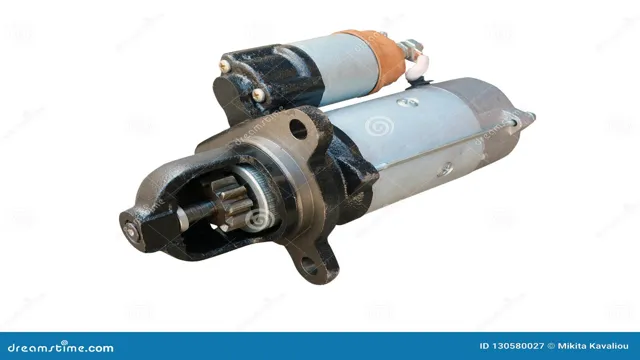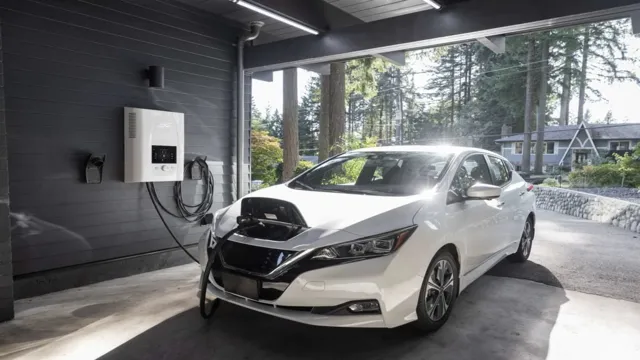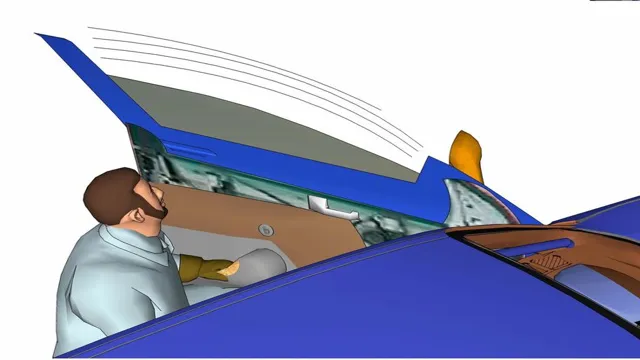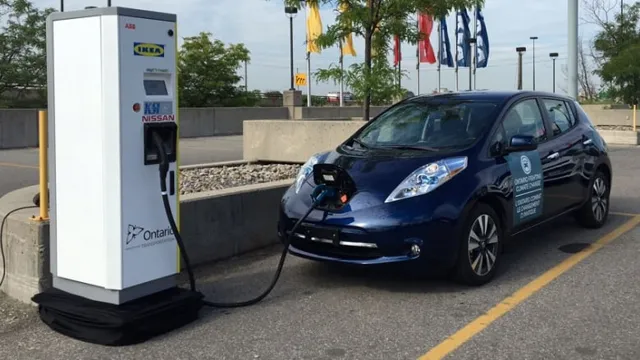The Evolution of Car Electric Starters: A Fascinating History
Have you ever wondered how the invention of the electric starter revolutionized the automotive industry and minimized the difficulty of starting a car? Before the electric starter was introduced in 1911, drivers had to manually start their cars by using a hand crank. This was not only time-consuming but also physically exhausting, and it involved certain risks of injury if the crank recoiled. The idea for an electric starter system was initially introduced by the French engineer, Charles Kettering.
He developed the system while working for the Dayton Engineering Laboratories Company (DELCO), which was owned by General Motors. It consisted of a small electric motor connected to the car’s battery, which used a gear to crank the engine when the ignition was turned. The electric starter system was first installed on the 1912 Cadillac, which was a high-end luxury car.
This quickly made starting a car easier, safer, and more reliable than ever before. The electric starter became a standard feature in cars by the mid-1920s. Today, the electric starter system is something that most people take for granted, but it played a significant role in the development of modern cars and made driving a more accessible, convenient, and enjoyable experience.
It’s amazing to think that something so small could have a revolutionary impact on an entire industry.
Early Attempts at Self-Starting Engines
The history of car electric starters dates back to the early days of automobiles when drivers had to hand-crank their vehicles to start the engine. This was a strenuous and often dangerous activity as the crank could kick back and injure the operator. In the early 1900s, several self-starting mechanisms were invented, including the air starter, the compressed air starter, and the electric starter.
These early attempts at self-starting engines were often unreliable and expensive, making them inaccessible to average motorists. It was only in 1911 when Cadillac introduced the electric starter as a standard feature on their Model 30 that the technology became widely popular. Today, we take for granted the convenience and safety of simply turning a key or pushing a button to start our cars, but it was a long and fascinating journey to get to where we are now.
Hand-Cranked or Pneumatic Systems
Hand-cranked and pneumatic systems were early attempts at self-starting engines. These systems required manual or mechanical effort to get the engine up and running. With hand-cranked systems, the user had to physically turn a handle to get the engine to start.
Pneumatic systems, on the other hand, used compressed air to power the engine. Both systems had their limitations and drawbacks. Hand-cranked systems were not very efficient and could be dangerous if not handled properly.
Pneumatic systems, while more efficient, required a lot of maintenance and were also prone to leaks and other problems. Despite these issues, these early attempts at self-starting engines laid the foundation for future advancements in engine technology. Today, modern engines are equipped with electronic start systems, making it much easier and safer for users to start and operate their engines.
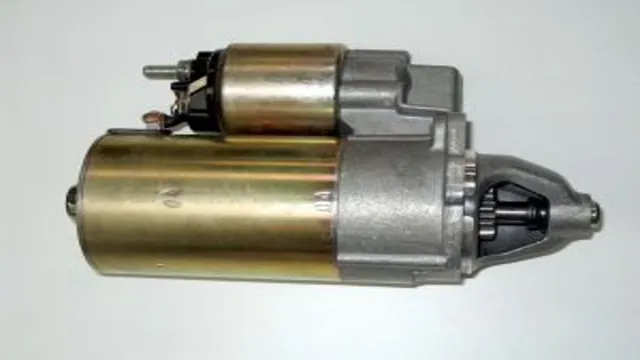
The Struggle to Make Electric Starters Practical
In the early days of automobiles, starting an engine by hand-cranking it was a laborious and potentially dangerous task. As cars became more popular, inventors and engineers sought to make the process of starting an engine easier and safer. The first attempts at an electric starter were made in the late 1800s, but these early prototypes were expensive and unreliable.
It wasn’t until Charles Kettering developed the electric starter in 1911 that the idea of a self-starting engine became practical. Kettering’s invention revolutionized the automotive industry, making it possible for drivers to start their cars with the simple turn of a key. Despite the initial struggles to make electric starters practical, the advancements made by pioneers like Kettering paved the way for the modern convenience and safety features we take for granted today.
Key Innovations in Electric Starters
The history of car electric starter technology is a fascinating one with many key innovations along the way. In 1911, Charles Kettering introduced the first electric starter, which replaced the dangerous hand-crank that was prone to causing injuries. The electric starter used a small electric motor to turn the car’s engine, making it much easier to start.
This innovation revolutionized the automotive industry and made driving much safer and more accessible. As time went on, advancements continued to be made, such as the introduction of the automatic starter relay in the 1930s and the development of the starter solenoid in the 1940s, both of which improved the efficiency and reliability of the electric starter. Today, electric starters come standard in all modern cars and are a vital component for getting our vehicles moving with ease.
It’s incredible to think how far this technology has come since Kettering’s invention over a century ago.
Invention of the Bendix Drive
The Bendix Drive was a pivotal innovation in the development of electric starters for automobiles. Before its invention, the process of starting a car required the driver to physically crank the engine, a task that was both daunting and dangerous, especially in cold weather conditions. The Bendix Drive changed all that, allowing the driver to simply turn the key and have the engine start on its own.
This was achieved through the use of a spring-loaded gear that engaged the engine’s flywheel when the starter motor was turned on. This ingenious mechanism helped to make cars more accessible to the masses, and made the driving experience much easier and more enjoyable. The Bendix Drive was just one of many key innovations that have led to the modern electric starters that we use today, and it will always be remembered as a vital part of automotive history.
Introduction of Starter Solenoids
Starter solenoids are one of the key innovations in electric starters that have revolutionized the way automotive engines start. In the past, engines had to be started using a manual crank, which was not only physically demanding but also prone to accidents. The introduction of starter solenoids made starting engines a lot easier and safer.
A starter solenoid is an electromechanical device that controls the flow of current to the starter motor. When the ignition switch is turned on, the starter solenoid receives a signal from the battery, which activates an electromagnetic field that pulls a plunger towards the starter motor. This action engages the starter motor with the engine’s flywheel, which in turn starts the engine.
Starter solenoids have made modern cars more reliable and efficient, and have become an indispensable component of any automotive system.
Improvements in Battery Technology
Improvements in Battery Technology and Key Innovations in Electric Starters have been rapidly changing the landscape of the automotive industry. Batteries are the heart of electric vehicles, and improvements in battery technology have made it possible for electric vehicles to travel farther and charge faster than ever before. Lithium-ion batteries, for example, have become the go-to battery technology for automakers due to their high energy density and long-lasting performance.
Meanwhile, key innovations in electric starters have made the starting process more efficient and reliable. Traditional starter motors have been replaced with lighter, more compact electric starters that offer instant torque and faster response times. With these advancements in battery and starter technology, the future of electric vehicles looks electric- and promising!
Modern Electric Starters
The car electric starter history began over a century ago with the invention of the first electric starter in 191 Prior to its invention, drivers had to manually crank their engines to start their cars, which was often a tedious and physically demanding task. The electric starter revolutionized the auto industry, making it easier for drivers to start their cars and thus, increasing the popularity of automobiles.
Today, modern electric starters are even more advanced and efficient than their early counterparts. They are designed to work seamlessly with the engine management system, providing quick and reliable engine start-up while also reducing emissions and fuel consumption. With the push of a button, the electric starter initiates a signal that activates the starter motor, which in turn, rotates the engine’s crankshaft, ultimately bringing the engine to life.
Despite its significant contribution to the auto industry, the car electric starter continues to evolve to meet the changing needs of drivers. It is now a vital component of modern cars and has become an essential feature that we take for granted. Whether you’re driving a classic car or the latest model, the electric starter remains an indispensable part of your vehicle, ensuring you always get a smooth and effortless start.
Advances in Starter Motors and Drives
Advances in Starter Motors and Drives have allowed manufacturers to create more efficient and durable electric starters for vehicles. Modern electric starters are designed to provide reliable performance even in extreme conditions, making them an essential component in any vehicle. They use powerful magnets and less bulky machinery than traditional starters, which means they are more compact and take up less space under the hood.
Additionally, advances in materials science have enabled the creation of components that are more heat-resistant and durable, ensuring a longer lifespan for starters. These advancements have contributed significantly to the overall performance and reliability of vehicles, making driving safer and more efficient. With these developments, drivers can look forward to a brighter future with more reliable and efficient vehicles on the road.
Incorporation of Electronic Controls
Modern Electric Starters The incorporation of electronic controls has revolutionized the automotive industry, enabling enhanced performance and convenience in vehicles. One of the most significant innovations in this realm is modern electric starters. Electric starters replaced the hand-crank mechanism that was once common in many vehicles.
With an electric starter, a small motor powered by an electrical battery turns the engine’s crankshaft, initiating the combustion process without manual effort. Electric starters are more reliable, eliminating the need for physical exertion and giving drivers greater control over their engines. Moreover, modern electric starters incorporate advanced electronic controls, enabling diagnostics, improved fuel efficiency, and enhanced safety features.
They ensure the vehicle runs smoothly and efficiently, mitigating the risk of engine damage and breakdowns. Overall, the technological advances in automotive systems ensure that modern electric starters bring a multitude of benefits to drivers – from convenient and effortless starts to superior performance and safety.
Conclusion
In conclusion, the electric car starter represents an ingenious leap forward in automotive technology. Gone are the days of crank starting and strained shoulders. With the push of a button, we can now effortlessly awaken our vehicles and embark on our daily journeys.
It’s no wonder the electric starter has become a staple in modern cars – it’s the ultimate convenience for the lazy and the tired. So the next time you start your car, take a moment to appreciate the evolution of automotive ingenuity and be thankful for the wonder of electricity.”
FAQs
What was the first car with an electric starter?
The first car with an electric starter was the 1912 Cadillac.
Who invented the electric starter for automobiles?
Charles F. Kettering is credited with inventing the electric starter for automobiles in 1911.
How did cars start before electric starters?
Before electric starters, cars were started by hand-cranking the engine.
When did electric starters become common in cars?
Electric starters became common in cars during the 1920s and 1930s.
